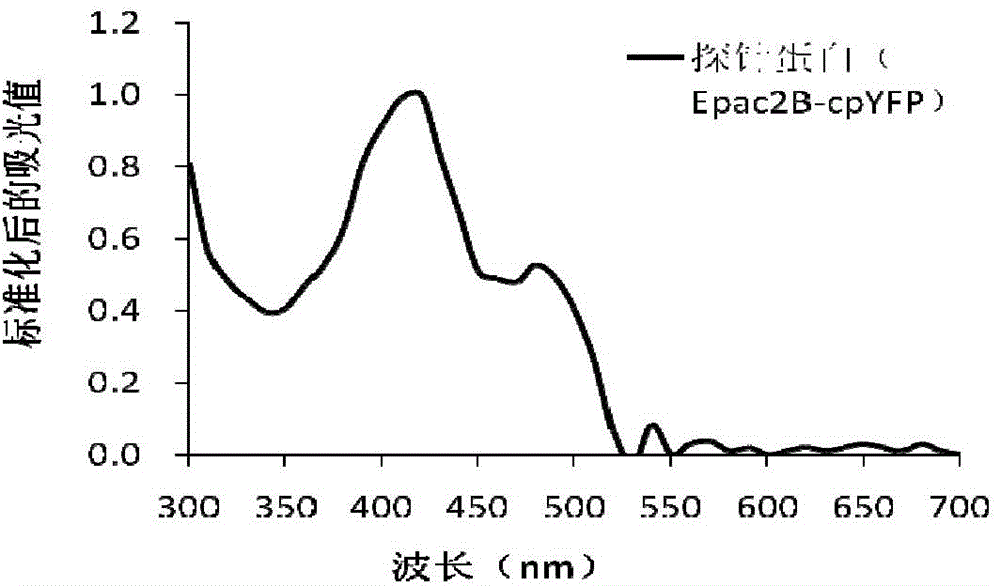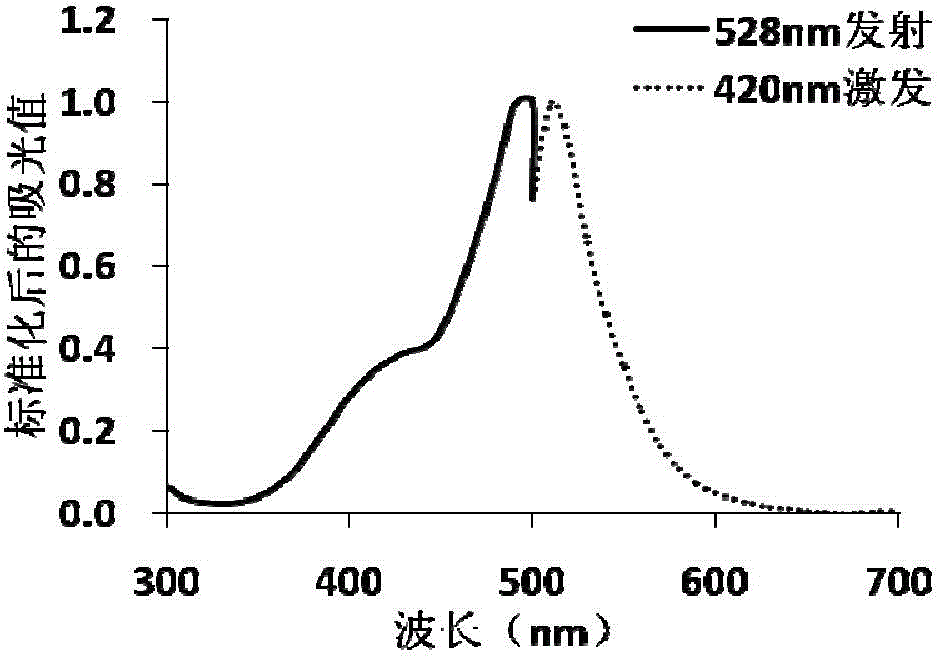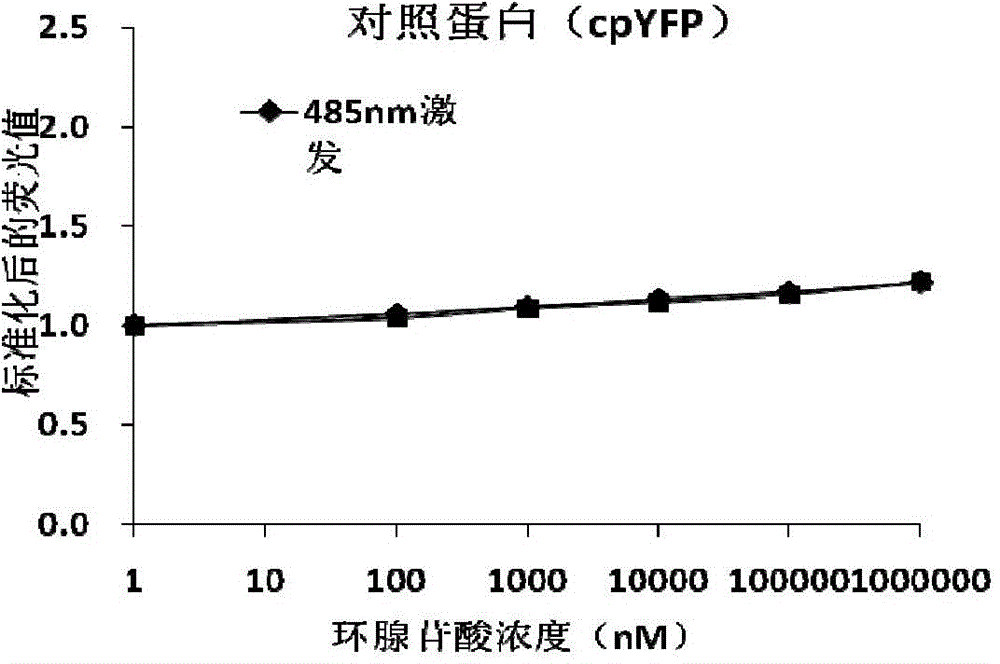A gene-encoded cyclic adenylic acid fluorescence probe, and a preparing method and applications thereof
A fluorescent probe, gene encoding technology, applied in the fields of biochemical equipment and methods, fluorescence/phosphorescence, chemical instruments and methods, etc., can solve the problems of insufficient target molecule sensitivity, influence, probe sensitivity and unsatisfactory detection limit, etc.
- Summary
- Abstract
- Description
- Claims
- Application Information
AI Technical Summary
Problems solved by technology
Method used
Image
Examples
Embodiment Construction
[0065] The term "fluorescent probe" as used herein refers to a polypeptide sensitive to cAMP in the environment that is fused with a fluorescent protein. The polypeptide sensitive to cAMP in the environment can specifically be an Epac protein, using the specific cAMP binding domain in Epac and cAMP The conformational change produced after binding causes the conformational change of the fluorescent protein, resulting in a change in the generated fluorescence. The standard curve is drawn by measuring the fluorescence of the fluorescent protein at different cAMP concentrations, and then used to detect and analyze the level of intracellular cAMP.
[0066] The term "fusion protein" used herein has the same meaning as "fluorescent fusion protein" and "recombinant fluorescent fusion protein", and refers to the amino acid sequence of a polypeptide comprising a specific binding domain or a fragment, derivative or analog thereof.
[0067] In the present invention, the term "Epac protein"...
PUM
 Login to View More
Login to View More Abstract
Description
Claims
Application Information
 Login to View More
Login to View More - R&D
- Intellectual Property
- Life Sciences
- Materials
- Tech Scout
- Unparalleled Data Quality
- Higher Quality Content
- 60% Fewer Hallucinations
Browse by: Latest US Patents, China's latest patents, Technical Efficacy Thesaurus, Application Domain, Technology Topic, Popular Technical Reports.
© 2025 PatSnap. All rights reserved.Legal|Privacy policy|Modern Slavery Act Transparency Statement|Sitemap|About US| Contact US: help@patsnap.com



